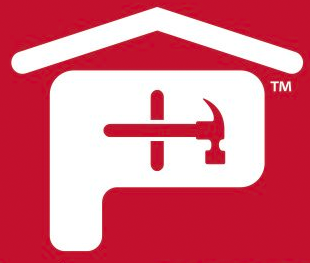The danger of a roofer falling off a house can be avoided if the correct safety precautions are followed at the construction site. Still, falls at construction sites remains one of the leading causes of death in the construction field and while a roofing contractor is on the front lines of worker safety it is advisable for a homeowner to understand and ensure federal safety regulations are being followed when they hire a contractor for roofing repair and shingle replacement projects.
In fact despite federal regulations, inadequate fall protection at building construction sites just moved to the top of the Occupational Safety and Health Administration (OSHA) list of workplace citations surpassing scaffolding violations for the first time in four years, according to a recent report issued by OSHA - the U.S. government’s body, which establishes and enforces industrial and workplace safety standards.
It’s easy as a homeowner to get caught up in a roofer’s service and product offerings, including selection of the color and features of the shingles and the underlayment you want. The added step of asking the roofing contractor about worker safety precautions that will be used on your project could be invaluable to your peace of mind and for minimizing personal risk during the installation work. Also, safety procedures can take time and patience in order to adhere to best practices and federal rules and that new roof might take slightly longer to have.
Roofing contractors bear an important responsibility to make sure their job sites are safe and their roofers are working as safely as possible on each roof installation. This means proper training and experience for roofers. It also means adherence to some newly revised mandatory safety guidelines.
OSHA issued STD 03-11-002, Compliance Guidance for Residential Construction on December 16, 2010. This was the official notice that OSHA would soon be proactively enforcing the fall protection established by its directive 29 CFR 1926.501 (b) (13), which applies to residential construction work.
According to OSHA, “workers engaged in residential construction six (6) feet or more above lower levels must be protected by conventional fall protection (in other words, guardrail systems, safety net systems, or personal fall arrest systems) or other fall protection measures….”
Prior to this mandate, OSHA allowed contractors to use alternate fall protection methods such as slide guards, cleats, etc., rather than more rigorous safety methods such as safety nets and fall arrest systems.
OSHA is giving roofing contractors time to make the new fall measures standard practice before enforcing tougher penalties. This means contractors must obey the guidelines now, but there will be reduced penalties as well as assistance with enforcement during the interim period.
According to OSHA’s own memo, the temporary enforcement measures included “priority on-site compliance assistance, penalty reductions, extended abatement dates, measures to ensure consistency, and increased outreach.”
When the temporary enforcement measures expired on March 15, 2012, they were extended again until September 15, 2012. Recently, OSHA announced a second extension to the temporary enforcement measures of this directive, which measures are valid until December 15, 2012.
What does this regulation and its enforcement mean to roofing contractors? Does this deliver any particular result for homeowners?
Some of the most obvious results of these actions are actually shared by contractors and their customers. In order to comply with these OSHA measures, many contractors will have to purchase extra equipment. The cost may well be figured in to their projects, and partially passed on to their customers, possibly increasing the price of roof installations, even if slightly.
Proper installation and usage of safety equipment like fall arrest systems takes some time and effort, which may be reflected in the speed of job completion. Sometimes it’s not as easy to work on the roof while using these systems, so more hours may be required for the projects. These additional hours may be figured in roof installation estimates, which could again raise the price of the overall projects. Still, the homeowner will get more than money can buy and that is a worry-free, safe installation of their roofing system.
On the flip side, there is the potential for cost reduction for contractors, that can demonstrate to their insurer that their operational practices are safe and by the book. The insurer may then reduce insurance premiums to reflect the reduction in risk to everyone involved. This remains to be seen since the insurance industry already bases risk and underwriting standards assuming a safe workplace. However, additional fall protection measures would necessarily be factored in. If premiums were reduced contractors may also pass the reduced overhead on to the customers.
As for homeowners, it’s always less risk to have workers acting more safely on your property. The stricter compliance measures should mean crews should face less risk, so you do as well. Sometimes there are legal complications when a worker is injured on your property, even when he is supposed to be under the supervision of his employer. Additional safety measures can help avoid these issues altogether.
Hopefully the bottom line will be a reduction in injuries and even fatalities from falls, which take place during residential roofing projects. According to OSHA, fatalities from falls are the number one cause of workplace death in the construction industry and account for one-third of all construction related deaths.



 Gear!
Gear! PRO LOGIN
PRO LOGIN